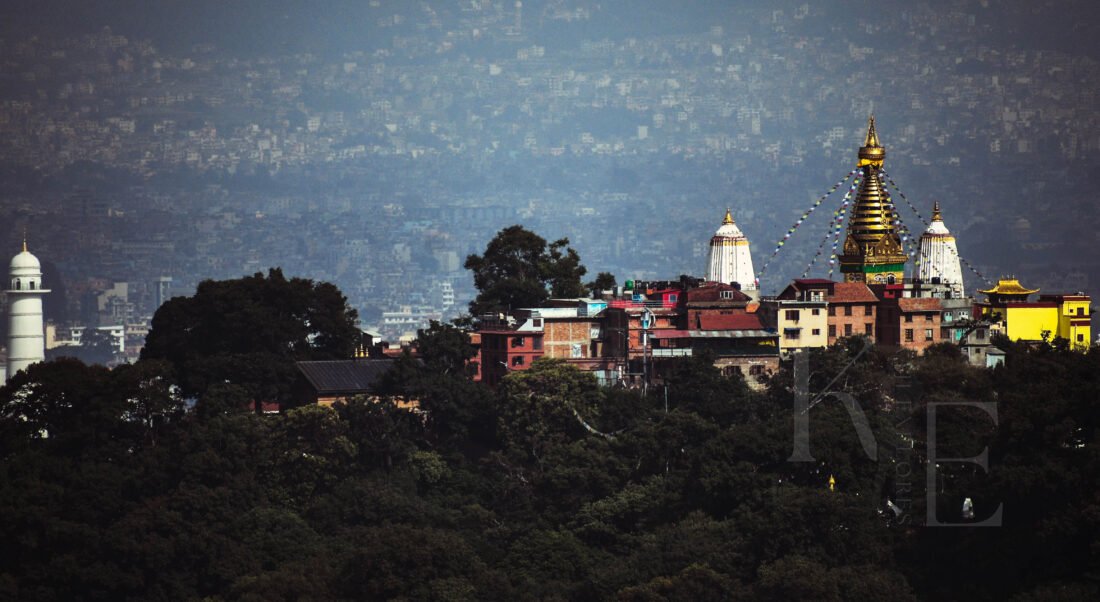Share This:

Nepal Photography Guide: Tips and Techniques for Capturing Nepal’s Stunning Landscapes
Nepal, a land of mystique nestled in the lap of the Himalayas, beckons photographers with its diverse landscapes and vibrant culture. For those who have an enthusiasm for photography, Nepal offers a stunning wonderland, offering everything from the majestic summits of the planet’s tallest mountains to historic temples and green valleys. In this comprehensive guide, we will explore the essential tips and techniques for capturing the breathtaking landscapes of Nepal, along with popular photography destinations that showcase the country’s natural and cultural splendor.
Essential Tips for Capturing Nepal’s Landscapes
Understanding Light and Weather Conditions:
Nepal’s landscapes are greatly influenced by light and weather conditions. Schedule your photo shoots for just after sunrise or just after sunset, when the warm, soft light best brings out the natural beauty of the area. Keep an eye on the weather forecast, and be prepared for sudden changes, especially in the mountainous regions.
Golden Hours Matter:
Take advantage of the golden rays at sunrise and sunset to enjoy cozy, gentle illumination that accentuates the stunning beauty of Nepal’s natural surroundings.
Acclimatization at Higher Altitudes:
Many popular photography destinations in Nepal, such as Everest Base Camp, are situated at high altitudes. To avoid altitude sickness and ensure peak physical condition, acclimatize gradually. To photograph beautiful pictures while not endangering your well-being, have rests, drink plenty of water, and pay attention to your body.
Pack the Right Gear:
The right gear is crucial for capturing Nepal’s diverse landscapes. Pack a sturdy camera with a variety of lenses – wide-angle for expansive landscapes, telephoto for wildlife, and a macro lens for capturing intricate details. Continued picture shoots require a reliable foundation, additional power supplies, and SD cards.
Engage with Local Communities:
The heart of Nepal lies in its people. Engage with local communities respectfully, seek permission before taking portraits, and immerse yourself in the cultural richness. The genuine connections you make will reflect in your photographs, adding a human touch to the stunning landscapes.
Embrace the Unpredictable:
Nepal’s landscapes are dynamic, and weather conditions can be unpredictable. Embrace the unexpected – rolling clouds, sudden rainbows, or local festivals can add a unique dimension to your photographs. Stay flexible in your plans and be ready to capture the magic of the moment.
Patience is Key:
Whether waiting for the perfect light or wildlife to make an appearance, patience is a virtue in Nepal. Take your time to explore and wait for the right moments. Patience often rewards photographers with shots that encapsulate the true essence of Nepal’s landscapes.
Post-Processing for Enhancement:
After returning from your photography expedition, enhance your images with post-processing. To modify brightness, color harmony, and visibility use tools such as Lightroom from Adobe or Photoshop. experiment with different presets to bring out the unique characteristics of each landscape and cultural scene.
Popular Photography Destinations in Nepal
Annapurna Region:
The Annapurna region, known for its diverse trekking trails, offers a wide range of photographic opportunities. The Annapurna Circuit, Annapurna Base Camp, and Poon Hill are popular spots. Capture the sunrise over the Annapurna Range, vibrant rhododendron forests, and traditional villages against the backdrop of snow-capped peaks.
Everest Base Camp:
Everest Base Camp is a bucket-list destination for many photographers. Document the journey to the base camp, the Sherpa culture, and the breathtaking views of Everest. The greatest times of day to photograph the tallest mountain in the globe are in morning hours and at sunset.
Pokhara:
Situated next to the tranquil Phewa Lake, Pokhara is a charming city encircled by the Himalayas. Beautiful landscapes can be created by capturing the Annapurna Range’s illustrations in the serene lake waters. The Himalayan ranges may be seen in their entirety from Sarangkot, a village located close to Pokhara, especially around sunrise.
Kathmandu Valley:
The vicinity of Kathmandu is a centuries-old cultural and historical gold mine. Explore places like Pashupatinath Temple, Boudhanath Stupa, and Swayambhunath (Monkey Temple), which are listed as UNESCO World Heritage Sites. Take in the elaborate architectural design, lively street culture, and ecclesiastical atmosphere that this historic city has to offer.
Langtang Valley:
For a less crowded but equally mesmerizing experience, explore the Langtang Valley. The Langtang National Park is home to beautiful landscapes, traditional Tamang villages, and stunning views of the Langtang Lirung. The valley offers a unique blend of natural beauty and cultural richness.
Chitwan National Park:
Take pictures of elephants, bengal tigers, one-horned rhinoceroses, and a variety of kinds of birds in their native environments. Safaris through the park provide ample opportunities for capturing Nepal’s wildlife.
Conclusion
Nepal’s stunning landscapes offer a canvas for photographers to capture the beauty, diversity, and spirit of this Himalayan nation. By understanding the unique features of each destination, preparing for the challenging terrain, and embracing the cultural richness, photographers can create a visual narrative that tells the story of Nepal through their lens. Armed with the essential tips and techniques outlined in this guide, embark on a photographic journey that will not only yield stunning images but also leave you with lasting memories of Nepal’s enchanting landscapes.
Need an assistance?
If you plan on trekking into the typical terrains, please contact us so that we can assist you in making the most of your trip.
